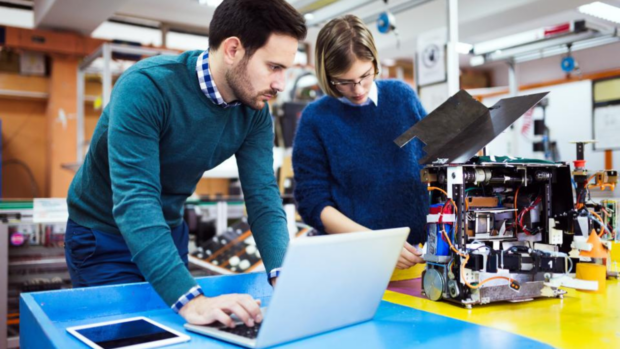MIT researchers have made a groundbreaking advancement in robot training, allowing robots to learn from their mistakes at a faster rate. Andi Peng, an electrical engineering and computer science grad student, explains that this new method significantly reduces the time needed to train a machine for specific tasks. The Inquirer Tech channel has been actively covering advancements in robotics research, highlighting the increasing interest from companies like Tesla in developing robots for everyday tasks. This MIT research brings us closer to a future where robots can assist us in mundane chores. In this article, we will delve into MIT’s innovative robot training technique and also explore other notable robotics projects to showcase the progress made in autonomous machine development.
So how does MIT’s robot training framework actually work? The project was explained in simple terms by the researchers at Massachusetts Institute of Technology. The framework addresses a common problem faced during robot training, which is that machines frequently fail to recognize objects. For example, a robot trained to pick up mugs may only be able to identify white mugs used in the laboratory. It may struggle to recognize mugs of different colors or patterns. In a similar vein, MIT’s own robot failed to pick up a brown mug featuring the campus mascot, “Tim The Beaver.” Andi Peng highlights that most robot engineers would typically start from scratch without understanding why the machine failed. She emphasizes the need for a feedback mechanism that enables the robot to demonstrate why it failed. To address this, Peng and her team developed a framework that allows humans to quickly teach robots with minimal effort. The framework utilizes an algorithm that identifies the necessary changes for the robot to successfully perform a task. Using the example of the mug, the algorithm provides guidance to the person teaching the robot, similar to how humans recognize dogs based on their general traits rather than specific breeds.
Moving on to other advancements in robotics, the article highlights the work of OpenAI, a globally recognized organization known for its ChatGPT bot. OpenAI has invested $23.5 million in the Norwegian robotics firm 1X to develop ChatGPT robots. The company is working on two models – EVE, a humanoid robot with wheels instead of legs that can manipulate objects without damaging them, and NEO, a robot that integrates with ChatGPT and can follow voice commands. The potential application of MIT’s robot training method to projects like these brings us one step closer to a science fiction-like future.
Another notable development is the creation of Pibot, the world’s first humanoid robot pilot. Developed by Korean scientists, Pibot uses ChatGPT to memorize flight manuals and has limbs and fingers to operate cockpit controls. Its voice integration allows for seamless communication with flight crews, positioning it as an indispensable first mate or even a main pilot.
In conclusion, the Massachusetts Institute of Technology has revolutionized robot training with their innovative framework that helps robots learn from their mistakes. By quickly identifying and addressing robotic deficiencies, engineers can save significant time in training machines. This advancement is a major boost for robotics development worldwide. To stay updated with the latest digital trends and tips, visit Inquirer Tech.
Denial of responsibility! VigourTimes is an automatic aggregator of Global media. In each content, the hyperlink to the primary source is specified. All trademarks belong to their rightful owners, and all materials to their authors. For any complaint, please reach us at – [email protected]. We will take necessary action within 24 hours.


